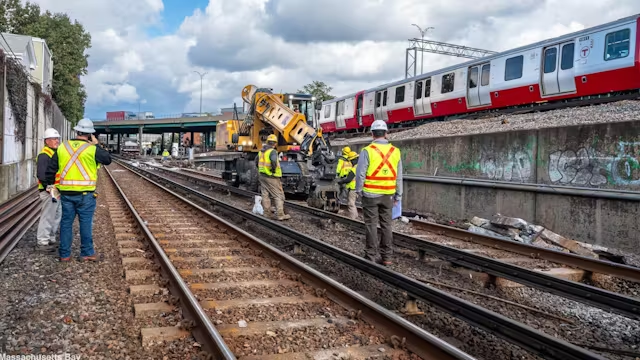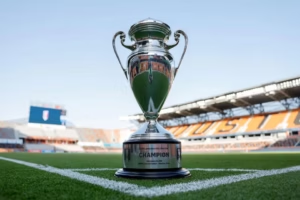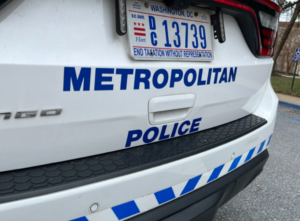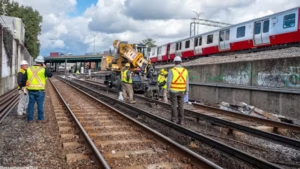Student Perspective: The DC Metro Significantly Outclasses My Hometown Subway System

Workers completing track maintenance on the MBTA Red Line. Image Courtesy of Mass Transit Magazine
By Anthony Curioso
This is an independently submitted op-ed for our Quill section. Views and statements made in this article do not necessarily reflect the opinions of The Tower.
As a wheelchair user with poor eyesight that prevents me from driving, one of the most crucial factors I considered when applying to colleges was the availability of accessible public transportation near each institution. I am from Boston, Massachusetts, a city served by the Massachusetts Bay Transportation Authority (MBTA). The MBTA has subway and regional commuter rail stations located near nearly all colleges and universities in the greater Boston area. However, I decided to attend CUA partly because the DC Metro system outperforms the MBTA in almost every category used to evaluate public transit systems.
The MBTA, commonly referred to as “the T,” began as the Boston Elevated Railway (BERy), which was established in 1897 through a commission from the then-mayor of Boston and the then-governor of Massachusetts. BERy opened North America’s first subway tunnel, the Tremont Street Subway, in 1897; this tunnel is still used today as part of the MBTA Green Line light rail. Boston’s version of the Metropolitan Transit Authority (MTA) succeeded BERy in 1947 due to financial difficulties; the Boston MTA (not to be confused with the similarly named system in New York) would eventually become the MBTA twenty years later in 1967 after also facing financial challenges.
Since the T became the T, it has faced numerous challenges in various areas. First, budget deficits led to a one-day shutdown of the T in the 1980s and have continued to affect the system ever since. Second, the T faced a lawsuit for failing to promptly comply with the Americans with Disabilities Act of 1990 (ADA). Lastly, the system has encountered various infrastructure issues, including a fire in July 2022, systemwide speed restrictions due to officials uncovering decades of deferred track maintenance, and other problems necessitating federal investigation and intervention.
By contrast, the DC Metro is a much newer system than the T. Construction commenced in 1969, and the first subway stations opened in 1976. Although the DC Metro has encountered some challenges over the years, the system has addressed most of these issues.
Both systems unveiled their latest extensions in 2022. The T launched new branches of its Green Line to Somerville in March and to the Tufts University campus just before Christmas that year. Meanwhile, the DC Metro opened a six-station extension of its Silver Line to Dulles Airport and Ashburn in Virginia shortly before Thanksgiving 2022.
However, the T still has significant work to do regarding wheelchair accessibility. While most subway, bus, and regional commuter rail stations are accessible, many Green Line stations and some regional commuter rail stations are not, as most opened before the ADA was enacted. In contrast, all subway stations on the DC Metro are accessible.
The T is still catching up on its deferred maintenance, which is severely affecting customers. The T posts updates on its X account whenever a delay occurs, and unfortunately, my phone is constantly blowing up with these notifications. By a significant margin, the most common delays on the T are due to disabled trains or issues with switches and signals.
Although the T is currently acquiring new cars for the Red and Orange lines, manufacturers have faced several delays in building the new trains. Since the oldest trains on this line date back to 1969 and are gradually becoming unusable, the T has recently decided to reduce the number of cars on a Red Line train from the previous standard of six to four to maintain or shorten headways until more new trains are available. The DC Metro operates the same trains across all its lines, making introducing a new train into service on any line easy if an issue arises with the older trains. However, on the T, the trains on each line are specifically designed for that line.
One significant advantage of the DC Metro is the headways of each line and the speed at which trains travel through the system. Since multiple lines in DC share the same platforms at several stations (e.g., L’Enfant Plaza, where the Green and Yellow lines stop on the top floor and the Blue, Orange, and Silver lines stop on the bottom floor), you could theoretically wait ten minutes or less for a train to arrive if you miss one. However, due to vehicle, track, and signal/switch issues affecting the T, you might wait up to 40 minutes for the next train if you miss one. Additionally, because trains on the T are specifically designed for the line they operate on, you will never see an Orange Line train running on the Green Line, for example.
I am grateful for and dependent on access to public transportation, both in my hometown of Boston and in DC while at CUA. However, I would prefer to stay in DC after I graduate from CUA because I cannot ignore how vastly superior the DC Metro is to the T in Boston.






